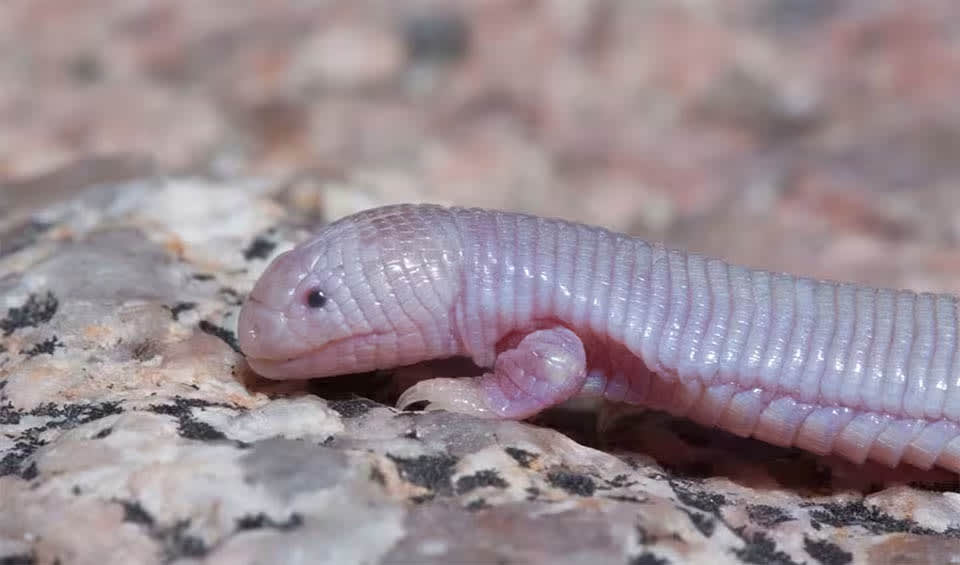This small, elusive animal is native to the Baja California Peninsula in Mexico and presents a blend of lizard and worm characteristics that make it quite a curiosity in the animal kingdom.
Firstly, the most striking feature of the Mexican mole lizard is its body structure. It has a pale pink or flesh-toned, segmented body that closely resembles an earthworm. This appearance helps it blend seamlessly into its subterranean environment. Unlike a typical worm, however, it has two well-developed, clawed forelimbs that it uses adeptly to dig through the sandy soils of its desert habitat. These limbs are crucial for burrowing and navigating underground, where it spends most of its life.
The Mexican mole lizard’s head is another interesting aspect. It is small and pointed, aiding in its burrowing activities, and features a pair of tiny eyes. Though its vision is presumed to be poor, this is not a drawback underground, where sight is less essential than the sense of touch or smell. The lizard’s sensory perception is adapted to its life beneath the surface, allowing it to detect vibrations and changes in the environment that signal the presence of prey or predators.
A unique behavioral trait of the Mexican mole lizard is its ability to detach its tail when threatened. This self-amputation, known as autotomy, serves as a defensive mechanism, allowing the lizard to escape predators while the detached tail continues to wiggle, potentially distracting the threat. Remarkably, it can regenerate this part of its body, although the new tail may not be as long as the original.
Despite their intriguing nature, Mexican mole lizards are rarely seen by humans due to their secretive, underground lifestyle. They are most active during the night or after heavy rains when the soil is easier to navigate.
Distribution
 Mexico
MexicoAnything we've missed?
Help us improve this page by suggesting edits. Glory never dies!
Suggest an editGet to know me
Terrestrial / Aquatic
Altricial / Precocial
Polygamous / Monogamous
Dimorphic / Monomorphic (size)
Active: Diurnal / Nocturnal
Social behavior: Solitary / Pack / Herd
Diet: Carnivore / Herbivore / Omnivore / Piscivorous / Insectivore
Migratory: Yes / No
Domesticated: Yes / No
Dangerous: Yes / No




